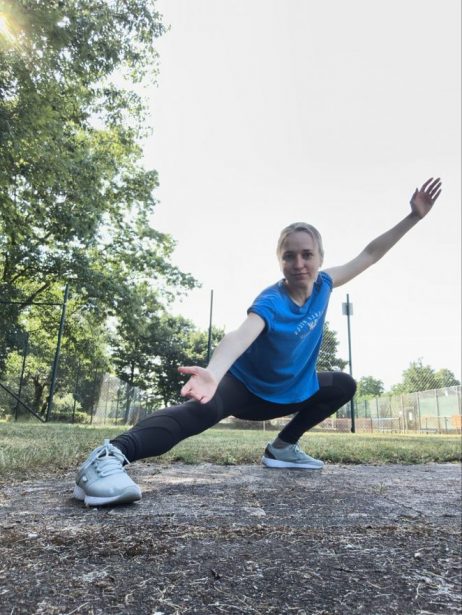

Тай Чі
Основи Тай Чі
Про що ти думаєш, те й робиш. З часом ви навчитеся відпускати свої думки на тренуваннях. А потім, навіть поза спортзалом.
Що таке тай чі?
Тайцзи – це традиційне китайське бойове мистецтво, яке наголошує на повільних, плавних рухах і глибокому, ритмічному диханні. Його часто практикують заради користі для здоров’я, включаючи зменшення стресу, покращення рівноваги та підвищення гнучкості. Тайцзи поєднує в собі елементи медитації, контрольованого дихання та м’яких фізичних вправ для створення цілісного підходу до благополуччя. Тайцзи підходить
для людей різного віку та рівня фізичної підготовки, що робить його популярним вибором для тих, хто прагне зберегти або покращити своє фізичне та психічне здоров’я.

Переваги тайцзи.
Поки ви практикуєте, ви перебуваєте в гармонії з трьома найважливішими системами – тілом,
розумом і духом.
Що це дає?
Опорно-руховий апарат опрацьовується м’якими, плавними та округлими рухами.
Ви вчитеся уникати різких рухів, але в той же час в комплексі присутні елементи
в комплексі присутні елементи розтяжки, тому ми приділимо час і цьому аспекту.
Твій розум перебуває в стані допитливості, засвоюючи нову інформацію і запам’ятовуючи схеми рухів. А ваш дух і сила волі допомагають терпінню, стресу і хаотичним думкам покинути вас.
Про викладача

Ho Chi Minh
15 years experience
Ці принципи роблять тайцзи унікальною і всеосяжною формою фізичних вправ, яка підходить для людей будь-якого віку і фізичних можливостей. Особливо відзначається його здатність зменшувати стрес, покращувати рівновагу та загальний стан здоров’я.
More courses you might like
Чайна церемонія

Тиха чашка здатна змінити ритм дня. Зазирніть у чайну церемонію, щоб побачити, як вода, лист і усвідомлений ритуал вплітають у кожен ковток здоров’я, спокій і людську близькість. Від давніх монастирів



